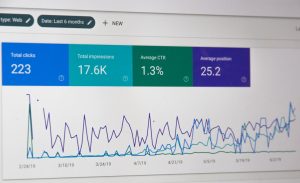What are the different types of AI agents?
3 min read
Artificial Intelligence (AI) agents are entities that perceive their environment through sensors and act upon that environment using actuators to achieve specific goals. These intelligent systems vary in complexity, capability, and design, depending on their intended purpose. Understanding the different types of AI agents helps in grasping how AI is applied in tasks ranging from simple automation to complex decision-making processes.
At the core, AI agents can be categorized based on their architecture and functionality. Below is a breakdown of the most common types of AI agents, each with unique characteristics that define their interactions with the surrounding environment.
1. Simple Reflex Agents
These are the most basic type of agents. They operate on the condition-action rule: “If condition, then action.” Simple reflex agents ignore the broader context and only respond to the current percept.
- Advantages: Fast responses, easy to design.
- Disadvantages: Not adaptable, limited to simple environments.
For example, a thermostat is a simple reflex agent—it checks the temperature (percept) and turns the heating system on or off (action) based on predefined rules.

2. Model-Based Reflex Agents
A model-based reflex agent improves upon the simple reflex model by maintaining an internal state, giving the agent context. It uses a model of the world to keep track of unobservable aspects of the environment.
- Internal Model: Captures the current state of the world.
- Decision-Making: Considers both current percept and stored internal state.
This type of agent is better suited for dynamic or partially observable environments, such as robotic vacuum cleaners that remember room layouts.
3. Goal-Based Agents
These agents further increase complexity by incorporating goals—specific objectives the agent aims to achieve. They evaluate the desirability of different states and act to reach their designated goals.
- Decision Making: Based on future outcomes, not just current state.
- Flexibility: Can choose between multiple courses of action.
Self-driving cars often behave as goal-based agents, where the goal is to reach a destination safely and efficiently.

4. Utility-Based Agents
Utility-based agents take goal-based reasoning to the next level by introducing the concept of utility. Here, the agent assigns a utility value—a measure of happiness or satisfaction—to each possible state and selects the action that maximizes overall utility.
- Optimized Decision-Making: Chooses the best path based on preferences or performance metrics.
- Use Case: Commonly used in complex systems like automated trading or resource management.
This allows the agent to handle trade-offs and make nuanced decisions, especially in uncertain environments.
5. Learning Agents
Learning agents are highly adaptive. They have the ability to improve their performance over time based on past experiences. These agents comprise four components: a learning element, a performance element, a critic, and a problem generator.
- Learning Element: Gains experience and updates knowledge.
- Performance Element: Makes decisions using current knowledge.
- Critic: Gives feedback as to how well the agent is doing.
- Problem Generator: Suggests exploratory actions to improve learning.
Examples include AI systems used in personalized recommendation engines and healthcare predictive models that refine their outputs over time.
Conclusion
The spectrum of AI agents ranges from simple rule-based systems to advanced, adaptive models capable of learning and optimizing actions. Each type plays a crucial role in various real-world applications. Selecting the right type of AI agent depends on the complexity of the task, the environment, and the need for adaptability or learning.
FAQ: Types of AI Agents
- Q: What is the simplest form of an AI agent?
A: The simplest form is the Simple Reflex Agent, which reacts only to the current input using predefined rules. - Q: How do Model-Based Reflex Agents differ from Simple Reflex Agents?
A: They maintain an internal state, allowing them to make more informed decisions based on past perceptions. - Q: What is the main benefit of a Utility-Based Agent?
A: It can evaluate multiple outcomes and select the action that maximizes long-term benefits or utility. - Q: Are Learning Agents used in real-world applications?
A: Yes, they are commonly used in areas such as personalized recommendations, financial forecasting, and robotics. - Q: Can a single AI agent be a combination of these types?
A: Absolutely. Complex AI systems often integrate features from multiple agent types to handle diverse and dynamic challenges.



